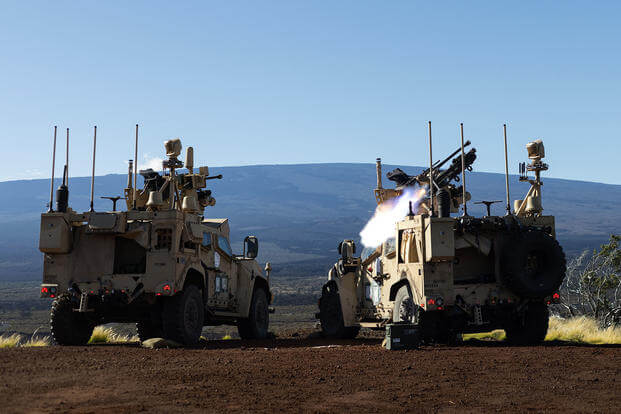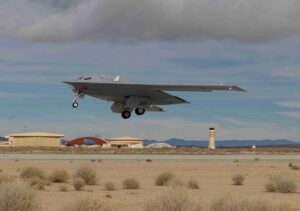Marines in Hawaii Test Advanced Anti-Drone System
In Hawaii, Marines are conducting trials with an innovative anti-drone system, the Marine Air Defense Integrated System (MADIS), ahead of their upcoming deployment to the Western Pacific. This deployment will be part of the Marine Rotational Force Southeast Asia mission later this year.
On January 25, at the Pohakuloa Training Area on Hawaii island, the 3rd Marine Littoral Regiment’s 3rd Littoral Anti-Air Battalion operationally tested the MADIS in a live-fire scenario, marking the first such exercise conducted by the Marines themselves rather than contractors. The system, consisting of pairs of armored vehicles, is equipped with sophisticated cameras and sensors to identify and neutralize small drone threats using a combination of weaponry and jamming technology. Thirteen MADIS units, totaling 26 vehicles, are currently being fielded by the battalion.
First Lt. Ian Menk, executive officer of the anti-air battery, emphasized the necessity of countering drone threats, stating, “the landscape of using (drones ) is so prevalent, we have a dire need to counter this capability.” He further noted that MADIS is “probably the most advanced counter-(drone ) system we have in the whole military.”
The development of MADIS was initially driven by the challenges faced during the conflict with the Islamic State group, where militants used modified commercial drones in combat. This tactic has since been observed in various global conflicts, highlighting the increasing prevalence of drones on the battlefield.
Col. John Lehane, commander of the 3rd MLR, remarked on the evolving nature of warfare, noting, “Some of the character of warfare is changing right now.” He pointed out the cost-effectiveness of modified drones used in combat, capable of significant damage for minimal investment.
The MADIS system is designed to offer a more cost-effective solution compared to traditional methods. It utilizes a 30-millimeter cannon, a machine gun, and occasionally smaller stinger missiles, offering a more economical alternative to expensive anti-drone missiles.
Lt. Col. Matthew Sladek, involved with MADIS from its inception, highlighted the system’s development as a culmination of a decade-long effort. The project is part of a broader initiative to modernize the Marine Corps as outlined in Force Design 2030, which seeks to return the Corps to its naval roots with an emphasis on agile, island-hopping operations.
The introduction of MADIS aligns with the Marine Corps’ strategic goals to adapt to changing geopolitical tensions, particularly in the Western Pacific. This includes addressing the need for survivability against potential air threats during operations.
As Marines prepare for deployment, they will be testing MADIS in diverse environmental conditions, including the tropical climate of the South China Sea, where they will train alongside Philippine forces. The system’s adaptability to different terrains will be a key focus of these exercises.
© 2025 The Honolulu Star-Advertiser. Visit www.staradvertiser.com. Distributed by Tribune Content Agency, LLC.
“`










